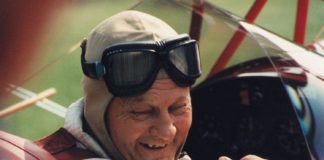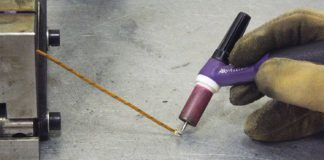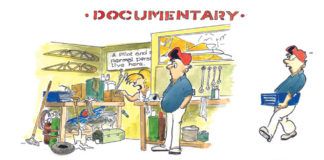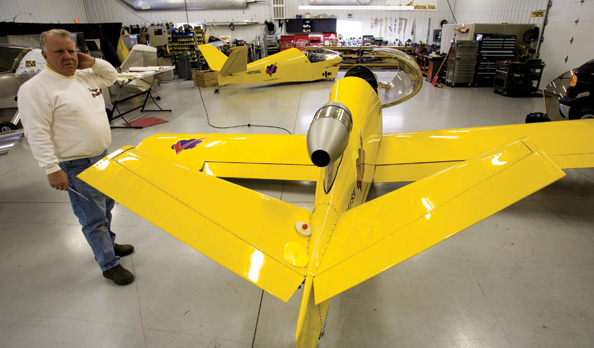
Just inside the Hornets Nest, Sonex Aircrafts R&D hangar, a little yellow airplane with a V-tail leans casually on its left outrigger roller. Its official designation-JSX-1-is painted on its slab-sided flanks, but it answers to the name embroidered on its seat: SubSonex. John Monnett, founder and president of the Oshkosh-based company, brims with the barely corralled excitement of a kid on Christmas morning as he describes firing up the little jet for the first time on December 18, 2009. (You can see-and hear-it for yourself at www.SonexAircraft.com/research). It ran again at a late January 2010 show-and-tell at the local EAA chapter meeting, and when you’re standing close, it teases with the heady redolence of kerosene.
The SubSonex passed its FAA airworthiness inspection in early February, and Monnett says hes been waiting three decades for this moment. With an impish grin and a nod toward the E-Flight Sonex thats sitting wingless by a workbench on which its second-generation electric motor sits, he pleads guilty to a bit of carbon trading. Still, the SubSonex has been Monnetts pet project since he saw the BD-5J in the 1970s, and it is now in the realm of affordability thanks to a new generation of small turbine engines.
In no uncertain terms, Monnett says the single-seat jet is a pure R&D effort. Sonex is not taking orders and offers no concrete information on price or availability; flight-testing and market research will determine its future as a 51% Experimental/Amateur-Built kit. A lean company with just eight employees, Sonex maintains its low-cost leadership with narrow margins and carefully managed growth, so it doesn’t end up servicing a lot of debt. Alluding to the industry fallout of the unfulfilled BD-5J marketing effort 30 years ago, Monnett doesn’t make promises the company cant keep for any of its designs. For those interested, the best way to follow the little jets progress is to subscribe to email updates on the company’s web site.
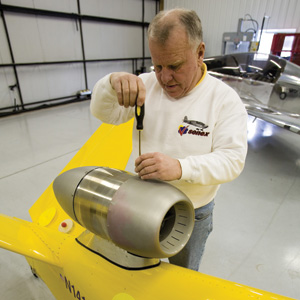
Monnett removes the single screw that holds the TJ-100s intake cowling in place.
Mission: Fun
The SubSonex was designed for one thing, Monnett says, to have fun in the local area. Fun includes aerobatics. Depending on how the pilot exercises the thrust lever, it carries an hour of fuel, Monnett says. Code-named the Peanut Project, because the idea was that one day it would be really cool to fly it on peanut oil, the prototype was rolled out at Sonexs open house just before EAA AirVenture 2009.
As it stood on pylons at the Sonex booth, many in the AirVenture crowd thought the SubSonex was a two-seat Waiex with a jet engine, Monnett says. But besides being smaller, the SubSonex has only one seat. Its an all-new airframe, and its V-tail similarity to the Cirrus and Eclipse turbine singles is coincidence, he says, adding that the airframe was done in 2008. Essentially, it is a scaled down, single-seat Sonex, an airplane capable of landing at a slow speed; 55 mph is the design goal. Redline is 300 mph, and Monnett said eagerly, We think it will do 200 mph. Flight testing, which will commence with Wisconsins flying season, will have the final word.
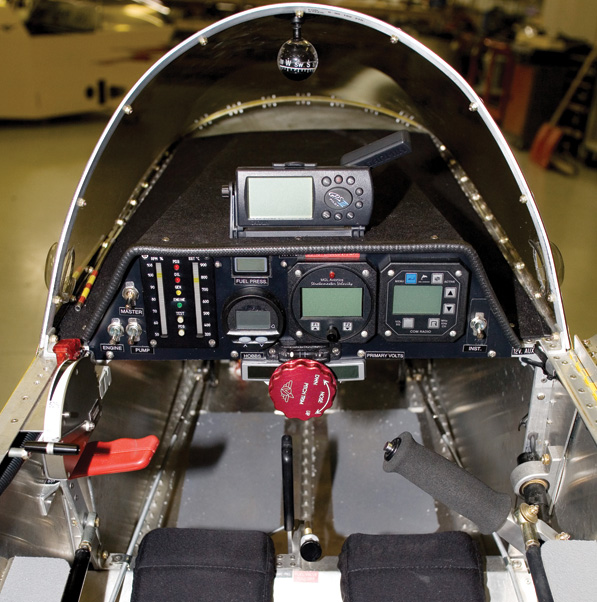
With throttle on the left and stick on the right, the SubSonex cockpit saves space with an MGL primary flight instrument and adjacent V10 com. In its next iteration, the SubSonex wont start tapering to the nose until the canopy bow.
Calling the jet a very short-winged glider, Monnett ticks through its measurements: 18-foot span and 15-foot-9 fuselage. To keep things simple, it employs elements of his motorgliders such as the landing gear. Empty, the prototype weighs 384 pounds and maxes out at 800 pounds on takeoff. Its got quite a fuel load, he says. The tank was designed to hold 32 gallons, but just finished system tests and calibration report 36 gallons, or 244.8 pounds of Jet-A. With the welded-aluminum tank behind the seat, the CG shifts less than three-quarters of an inch from full to empty, Monnett says, and the little plane should be quite sprightly once we burn off half of that fuel.
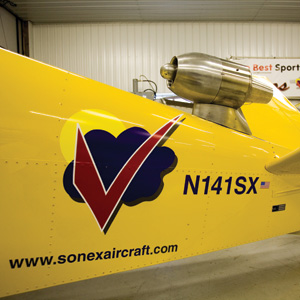
Sonex sold the airplanes first engine, one of the worlds two Heward Microjets, to the U.S. company that bought the rights to the British-designed engine.
Sonex employed the same construction techniques used with the rest of the Sonex family. Building the jet is a lot easier than a piston-powered homebuilt because it has a simple system, a fuel tank and a couple of pumps, Monnett says. With a plug-and-play motor like the Czech TJ-100, you just have to mount it and hook it up. There aren’t any baffling or cooling concerns; the engine control unit [ECU] takes care of it; all you need is to keep fuel in it.
Power Pod
To make it go, the SubSonex needs 170 to 200 pounds of thrust. Its first engine, made by a British company, Heward MicroJets, was designed for drones and small airplanes-not remote-control models. That engine is no longer available, Monnett says. After building two examples, Heward decided to move onto another career, designing miniature turbines. To compound the problem, the engine didn’t have an alternator/generator or an ECU, a critical component that manages every aspect of engine operation. Drawing on the electrical engineering talent working on its E-Flight project, Sonex built its own ECU. Interestingly, before Sonex invested in the ECU programming, a U.S. company bought the rights to the Heward engine. Sonex sold its engine and the ECU to the firm and has no information on the new owners plans.
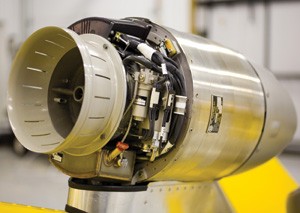
Below the intake is the TJ-100s oil tank, and the black box curving from 9 toward 12 oclock (you can just see the top of it) is the ECU. Between them are the oil separator and cooling. The oil and fuel pumps are hidden on the other side.
As expected, when word of the SubSonex radiated worldwide from AirVenture, other small jet engine makers expressed their interest, Monnett says. One of them was PBS (www.pbsvb.cz), a Czech company that has been making precision powerplants and pumps since 1950. Its new TJ-100 is roughly 24 inches long and 10 inches in diameter. At its center is a 4-inch turbojet of classic design, an axial turbine with radial compressor, annular combustion chamber and fixed output nozzle that nominally develops 210 to 220 pounds of thrust.
After unpacking the crate, Sonex installed the engine in eight days. The mount was ready when the engine arrived, but Monnett had to rewire the airplane for the throttle and engine instruments that are part of the package. Undoing a single screw, he removes the one-piece intake cowling and points to a finned black box that curves around the engine from 9 to 12 oclock, the ECU. At 6 oclock is the half-quart oil reservoir, good for about 2.5 hours. In the remaining space to the left are the oil and fuel pumps; to the right are the oil separator and cooling components. Under the aft cowling are the ignition module and alternator.
At 40 pounds, the TJ-100 is a little heavier than the Heward, Monnett says, but the two 12-volt batteries that unite in a 24-volt system fit perfectly in the nose, keeping the CG in check. There’s very little to connect: fuel, main power leads and a quick-disconnect fitting for the engine electronics. Several related components such as the spark-box module, an electronic solenoid and fuel-flow sender are hard-wired in the fuselage. A TJ-100 powers the glider that performed at AirVenture 2009, Monnett says, and he just takes the engine off and stores it in the trailer with the airplane. Likewise, the SubSonex is designed for trailer transportation and storage, but one need not remove the engine.
Running between 70% and 100% power, the engine will be pretty hungry, Monnett says, estimating a fuel burn rate of 36 gph. Thats what our testing will tell. A built-in recorder stores up to 50 hours of engine data on an SD card, and Sonex will share that information with manufacturer PBS, which will set necessary inspection and maintenance requirements as part of its European certification effort, now underway. An American company is negotiating with PBS to offer service and maintenance for the TJ-100 and its turboprop cousin, the TP-100, according to Monnett.
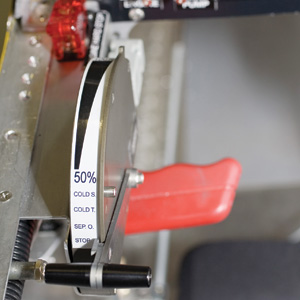
The throttle controls the TJ-100 from startup to shutdown. The red handle below is for flaps, and just forward is the red hard-stop switch.
Push and Go
Flipping the master switch, Monnett advanced the throttle to its first detent, and the engines tiny pumps wind up to a steady, muted whine. When the LED engine instrument gives the go-ahead, he pushes into the next detent, and the turbine starts sucking and squeezing air. At the next detent, the turbine spins faster, a pump squirts a steady stream of fuel into the combustion chamber, and the igniter starts a fire, retarding the throttle, Monnett says. Its awesome when it lights off. Sometimes there is some extra fuel on the can, so there’s this big whoof of flame, and then it looks like that flame is sucked back into the engine, but it isnt; its just getting burned off.
The ECU automatically makes sure everything stays within limits. On startup, for example, It analyzes where it needs to be and adjusts the fuel for idle, Monnett says. On shutdown it keeps the turbine running until it cools down to a certain EGT. In the cockpit, just forward of the throttle, a hard-stop switch hides under a red cover. In an emergency it shuts off the fuel at the engine so you can shut it down right now, bypassing the shutdown sequence. There’s also a manual override button: If the thing says, hey, you have low oil pressure…Im going to shut down, and you’re in the air, you can go, NO! You’re not! Monnett explained.
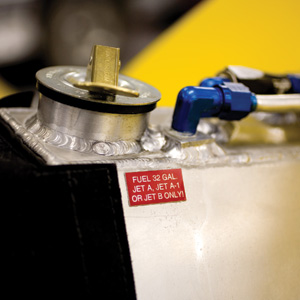
The 36-gallon tank is part of a circulating fuel system that returns fuel the engine doesn’t use. Attached to the blue fuel-line connector is a check valve that prevents the engine from sucking air if it demands more fuel than the pump can deliver.
The engine instrument displays the percentage of power applied with a vertical light bar. The EGT is similarly displayed on the right, and between are warning lights and the system test button. Front and center, in a standard size instrument hole, is the Stratomaster Velocity by MGL Avionics, which displays all pertinent information from altitude and airspeed to fuel level and flow and OAT. Next to it is MGLs V10 digital flip-flop com, which has something called VAGAD-a voice-activated gain-adjusting device-in its intercom that makes a standard headset act like it has active noise attenuation, Monnett says.
Pointing to the blue fittings just aft of the filler, which is right behind the headrest, the engine has a circulating system that returns fuel the engine doesn’t use to the tank. It also has a check valve that keeps the system from sucking air if the engine demands more fuel than the pump can deliver. Its like having a header tank without a header, Monnett says.
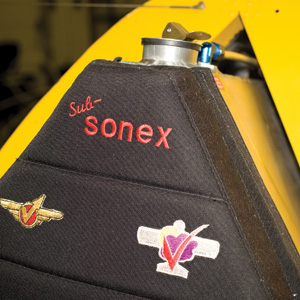
The fuel tank is on the CG, which shifts inch between full and empty.
Next Steps
If testing goes well and the interest is there, the airplane might become a kit, Monnett says. But before that happens, Sonex will build and test another prototype, one that incorporates flushing and fairing and other changes such as bringing the fuselage sidewalls straight forward to the canopy bow before tapering to the nose from their 24-inch separation (to give the pilot a bit more room). Another change that was just installed is a machined billet for the side stick that provides a bit more knuckle clearance. If successful testing moves the project to a second prototype, it will quite likely reveal other improvements as well.
Monnett hopes the kit will come to be, because it will be an affordable ultimate toy. The TJ-100 lists for about $45,000 plus accessories such as cowl and engine instruments. We think it will work out to a $60,000 kit with the engine and everything, but we wont know until we finish our testing, Monnett says. But really that is just the first installment of his kerosene dreams. After that there’s the three- or four-ship demo team and biofuel research.
For more information, call 920/231-8297 or visit www.sonexaircraft.com.

![]()
Scott Spangler A pilot since 1976, Spangler was the founding editor of Flight Training magazine. In 1999 he launched and edited NAFI Mentor for the National Association of Flight Instructors, and for seven years was editor in chief of EAA publications. As a freelancer hes written for Air & Space Smithsonian, Overhaul & Maintenance, Aviation for Women, Twin & Turbine and a number of non-aviation titles.

